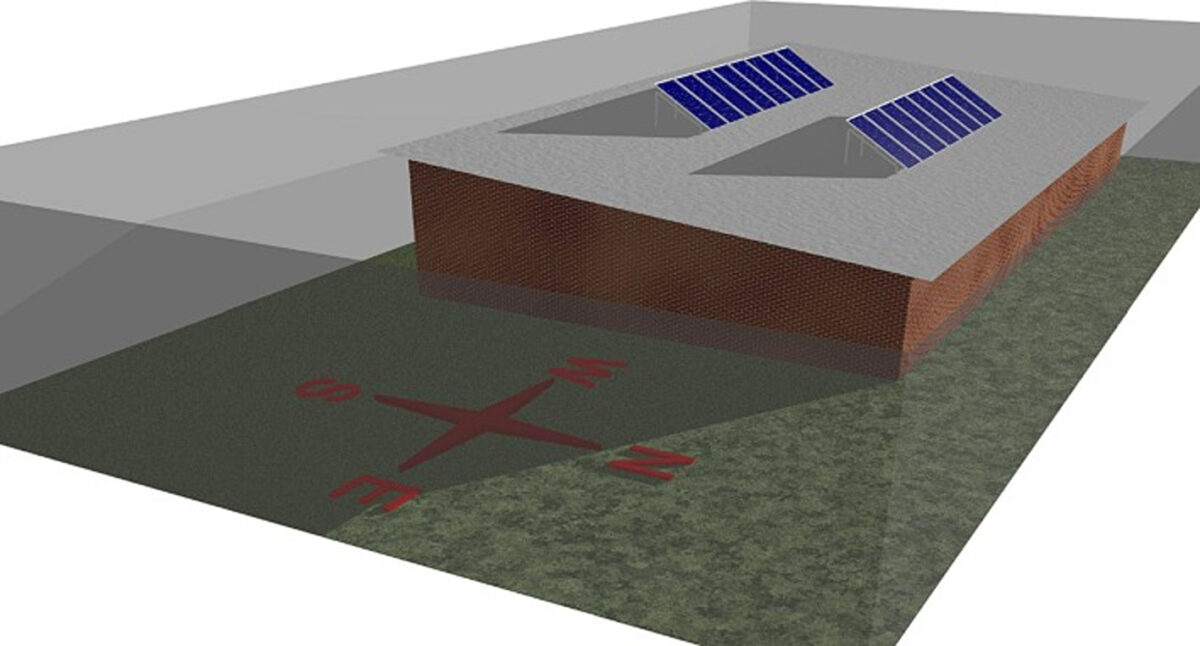From pv magazine Global
A group of researchers from the Australian National University (ANU) and Sydney-based PV manufacturer Sundrive has utilised Monte Carlo Ray Trace (MCRT) techniques and electrical modelling to assess the power yield gains that bifacial rooftop PV systems offer compared to monofacial counterparts.
The scientists explained that their modelling framework couples MCRT with a detailed electrical model of high-efficiency bifacial PV modules, which they said tackles the typical limitations associated with traditional view factor (VF) modelling.
“Specifically, the approach resolves the complexities of real-world factors, including mismatch phenomena at both the cell-to-cell and array levels arising from non-uniform illumination effects and edge effects,” they said. “Moreover, it meticulously accounts for non-uniform illumination effects stemming from module frames and mounting components, an aspect often overlooked in previous models.”
The proposed approach works in four steps: Optical modelling; thermal modelling; electrical modelling; and integration. The MCRT model assesses direct and diffuse light separately and combines the results based on measured direct and diffuse irradiance values at each timestep.
The research group utilised the MCRT framework for analysing the performance of two rows of eight solar modules each with a constant row-to-row distance of 5 m. The modules are tilt-rack mounted at different angles at over 20 cm above the surface of the roof. “It’s important to note that our exploration of system design does not extend to considerations of module spacing or other design factors that influence optimal system performance,” it said, referring to the limitations of their technique.
The analysis showed that rooftop reflectivity is a key factor in increasing a bifacial rooftop PV system performance. The academics found that bifacial arrays can provide energy gains that are up to 22.6% higher than those of monofacial counterparts. “Additionally, the investigation revealed that rooftop reflectivity also influences the optimal tilt angle for bifacial modules,” they emphasised. “Compared to monofacial modules, bifacial modules exhibit higher optimal tilt angles for maximum energy generation.”
Moreover, the analysis demonstrated that system and module design also play a decisive role in increasing power yield, with parallel interconnections of top and bottom substrings being particularly beneficial. “Without parallel substrings, bifacial gain was reduced by 0.9 % for a system with mounting components at a 75 % reflective rooftop,” the scientists noted.
Their findings were introduced in the study “Accurate modeling of the bifacial gain potential of rooftop solar photovoltaic systems,” which was recently published in Energy Conversion and Management.
This content is protected by copyright and may not be reused. If you want to cooperate with us and would like to reuse some of our content, please contact: editors@pv-magazine.com.









By submitting this form you agree to pv magazine using your data for the purposes of publishing your comment.
Your personal data will only be disclosed or otherwise transmitted to third parties for the purposes of spam filtering or if this is necessary for technical maintenance of the website. Any other transfer to third parties will not take place unless this is justified on the basis of applicable data protection regulations or if pv magazine is legally obliged to do so.
You may revoke this consent at any time with effect for the future, in which case your personal data will be deleted immediately. Otherwise, your data will be deleted if pv magazine has processed your request or the purpose of data storage is fulfilled.
Further information on data privacy can be found in our Data Protection Policy.